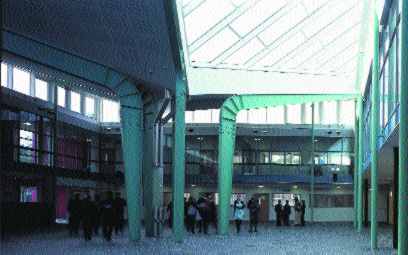|
|||||||
 |
DESIGN ISSUES FOR SCHOOLS Schools will remain at the heart of the learning process for children and adults, for the foreseeable future at least. Although ICT allows pupils, in theory, to learn from anywhere at any time, they still need the support of a regular base and a strong community. However, the boundaries between schools and other learning places will be less clear cut and the school of the future will become a resource for the whole community. There isn't a design blueprint for a school of the future; a variety of models will emerge. The main design challenge facing LEAs and schools is to balance the needs of different users, creating inspiring buildings with functional spaces that are appropriate for new educational developments and new technologies but adaptable enough to cater for the changing needs of the future. Part 2 looks at the key design issues to be considered when designing a school for today and the future. The guidance applies to both new schools and adaptations at existing schools. Schools can use the guidance for developing long term plans for improving their buildings. Much of the guidance in Part 2 is covered in greater detail in other publications, which are referred to at appropriate parts of the text or hyperlinks provided for the web-based version of the guidance (see www.teachernet.gov.uk/school buildings). The need for a good standard of design is implicit in all recommendations. Part 2 is divided into the following sections: 2.A
Spaces for today and tomorrow |
||||||
|

